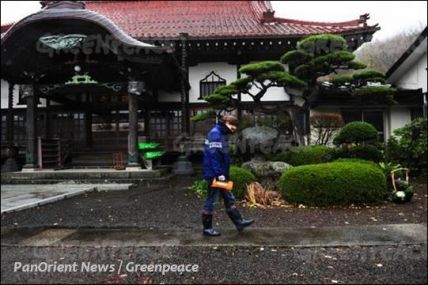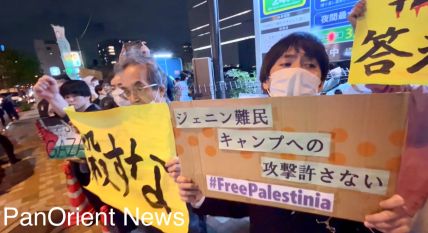|
|
Environment
Official Radiation Monitoring Stations in Fukushima ``Unreliable``: Greenpeace
Tuesday, October 23, 2012

Tokyo- (PanOrient News) Following new radioactive contamination checks in Fukushima City and the heavily contaminated Iitate last week, Greenpeace said it has found that official monitoring stations systematically underestimate the radiation risks for the population, and that the Government’s decontamination work remains patchy, misdirected, and insufficient, with evacuated areas receiving greater attention than heavily populated ones.
A press release by Greenpeace said more than 75% of the 40 government monitoring posts checked by Greenpeace in Fukushima City showed lower radiation levels than their immediate surroundings, with contamination levels within 25 meters of the posts up to six times higher than at the posts themselves.
“Official monitoring stations are placed in areas the authorities have decontaminated, however, our monitoring shows that just a few steps away the radiation levels rise significantly,” said Dr. Rianne Teule, Greenpeace International radiation expert. “We fear that these stations give the public a false sense of security.”
“Decontamination can make a significant difference to radiation levels, but there seems to be little progress in the cleanup work, and many hot spots remain throughout Fukushima City,” said Teule. “Low hanging fruit, such as the decontamination of children’s playgrounds and other areas needed to protect the most vulnerable, have not progressed sufficiently despite more than a year and a half passing since the triple meltdown at Fukushima Daiichi.”
Greenpeace also checked areas in Iitate, where the government has divided the community into different levels of risk in order to prepare for residents to return after decontamination. The radiation monitoring team found that the cleanup in the trial decontamination area of Kusano village has so far been insufficient, with radiation levels up to 5 microSieverts per hour (uSv/h) recorded in a residential area. Greenpeace also found hotspots of 13 uSv/h at a factory that was allowed to resume operations in September 2012, and 9 uSv/h at the entrance to a nearby residence.
These figures represent 60 to 160 times normal background levels, pre-Fukushima disaster (0.07μSv per hour), according to Greenpeace. All mentioned radiation levels were measured at a height of 1 meter above ground. It said "in the current situation, people are at risk of being exposed to several times the international radiation limit of 1miliSievert (mSv) per year".
“In contrast to Fukushima city, we saw many decontamination workers throughout Iitate, but given the mountainous and heavily forested nature of the region, these efforts are misguided at best as the cleanup is very difficult, and the risk of recontamination high,” said Kazue Suzuki, Greenpeace Japan nuclear campaigner.
“People cannot return to their lives in Iitate if their homes, businesses or farms are contaminated. One home or office may be cleaned up, but it is very unlikely that the whole area will be freed of radiation risks within the next few years, making it very difficult for people to rebuild their communities,” said Suzuki.
“The Government continues to downplay radiation risks and give false hope to victims of this nuclear disaster, when it should be making the sad, but necessarily hard decisions affected communities need to move on with their lives, and compensating them fairly,” concluded Suzuki.
Greenpeace is calling on the National Government to urgently allocate more money and resources to protect public health, and to focus on comprehensively decontaminating heavily populated areas, such as Fukushima city, rather than attempting to clean up highly contaminated, evacuated areas, where decontamination efforts may not prove sufficient.
PanOrient News
© PanOrient News All Rights Reserved.
|
|

